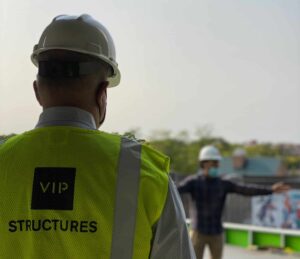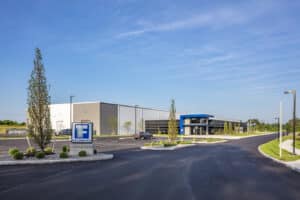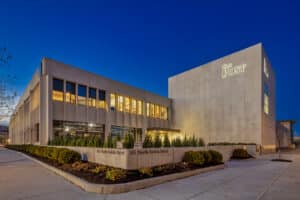Major construction is a complex, risk-laden venture that involves the expenditure of large sums of capital and demands constant attention to achieve success. An owner embarking on a construction project must make a number of important decisions regarding expansion or building new. If a new facility is the way to go, should you own or lease the facility? In addition, will ownership start at the onset of construction or be finalized at the end of the project (turnkey)? No matter what direction or option is chosen, several key factors should be considered and analyzed:
Budget: At what point in the project are accurate budgets needed – early on or in the design phase? Would cost information for alternate designs or materials be valuable? What is the flexibility of the budget to accommodate cost growth once the project has started?
Design: What is the desired function of the facility and how will the design program successfully fulfill the needs of the owner and users? What is the desired life-cycle of the building? Should design options or material selections be studied for cost effectiveness, durability or constructability?
Schedule: What is the desired schedule? Is there a need to expedite the project? Is there a need to set a fixed completion date? What will happen if the completion date is missed?
Risk Assessment: Risks are closely tied to schedule, cost and legal issues. How much risk is one willing to take? How should the flow of information and legal contracts be established to minimize these risks?
Here are a few steps you can take at the beginning of your project to help you navigate through all the noise, and to assist you in making an informed decision.
Find a Space Planning and Utilization Consultant
A space planning and utilization consultant familiar with the design-build process can work with you right from the beginning to help determine if existing space can be reimagined or if expansion is possible, and what that might look like from an esthetic, operational and budgetary standpoint. Simultaneously, the space planning and utilization consultant can develop a plan for a new facility, providing side-by-side comparison of esthetics, operations and cost to determine what direction makes the most sense today and well into the future.
Think About Using an Integrated Design-Build-Development Firm
Using a firm with a holistic view provides a client with specialized knowledge, experience and resources to navigate the complexities of a construction project. Using a design-build-development firm does not lessen one’s control over the project. Using a design-build-development firm enhances the project team and provides additional adjunct staff for the client. A team of experts in design, construction and financial services can empower you to make informed and timely decisions during the evolution of your project. In addition, a design-build-development firm can help with budget and cost estimating, constructability review, value engineering and schedule.
Capital Investment
Owning and operating the building will take a significant amount of up-front funding. In most cases, this money would be better spent on the business to help grow sales, invest in new, innovative strategies, and expand operations. If you decide to lease, work with a development firm who can help with site selection and provide an analysis of various leasing and buyout options. If you decide to own, work with a firm who can assist with obtaining funding including assistance in preparing financial packages for submission to prospective lenders. Some firms perform development services as a consultant if you choose ownership over leasing.
Operating Income
Working with a space planning and utilization consultant and integrated design-build-development firm will help you think through operational costs and, through design and engineering ideas make your operation more efficient and more productive. They’ll work with you to understand the logistics and determine ways to use space and building projects to cut cost across your entire business process. Some examples include warehousing on and off-site, increasing efficiencies in your manufacturing process using space, and so on.
The issue with traditional design-build and development is the narrow focus of each discipline. Architecture focuses on designing and planning. Engineering focuses on structural, mechanical and electrical systems of a building. Construction focuses on erecting and bringing the vision to life. None of them individually creates a 360-degree holistic view of the building project from start to finish, including development. Many do not help you take a step back and ask the right questions:
- What are you trying to accomplish?
- Where will you get the money?
- How can you increase efficiencies?
The decisions whether to re-imagine, expand, or build new, and whether to own or lease your facility depends on several factors. There is no one right choice, only the choice which is right for your specific needs. VIP incorporates development into its design-build approach, a unique differentiator in not only the Central New York area, but across the country as well. Our development team has provided valuable insight into life-cycle expenses, operating costs, and product durability for many clients.



